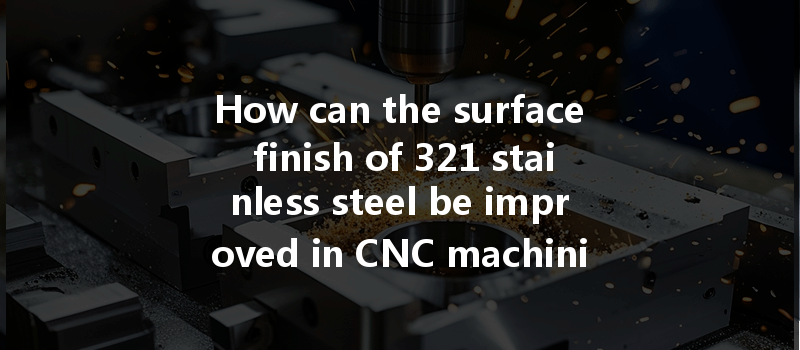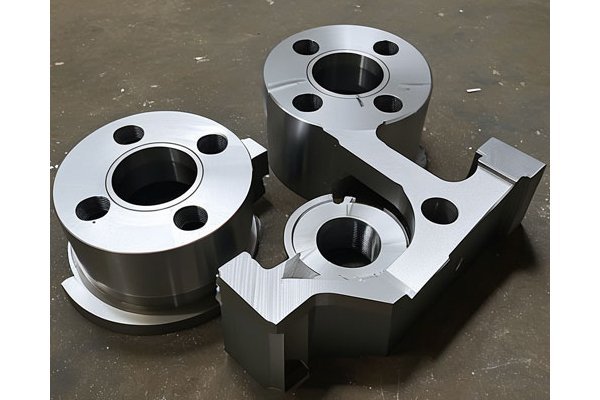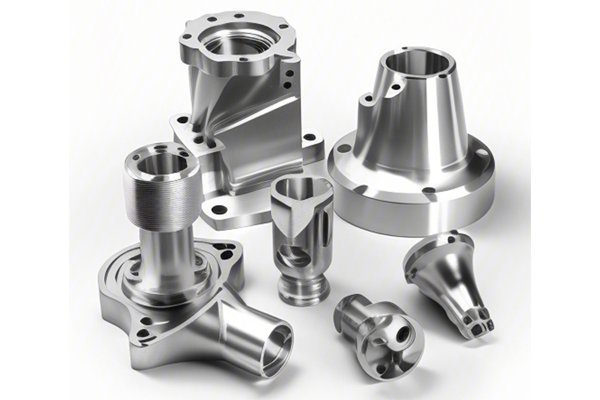Did you know that the surface finish of machined components can significantly affect their performance and longevity? A study by the American Society of Mechanical Engineers (ASME) revealed that approximately 20% of mechanical failures are attributed to surface finish inadequacies. This statistic emphasizes the importance of achieving optimal surface finishes, particularly when working with specialized materials like 321 stainless steel.
321 stainless steel, an alloy known for its excellent oxidation and corrosion resistance, is often chosen for critical applications in the aerospace, chemical processing, and oil and gas industries. However, maintaining a high-quality surface finish during CNC machining can be challenging due to its unique properties. In this comprehensive blog post, we will explore effective strategies and techniques to improve the surface finish of 321 stainless steel during CNC machining.
Understanding 321 Stainless Steel
Before diving into the techniques to enhance the surface finish of 321 stainless steel, it’s vital to understand its composition and characteristics.
Composition and Characteristics
321 stainless steel is an austenitic alloy primarily composed of iron, chromium (up to 18%), nickel (around 9-12%), and titanium (about 5% min). The addition of titanium helps stabilize the alloy during high-temperature exposure.
Key Characteristics:
These characteristics make 321 stainless steel an optimal choice for applications in environments that demand durability and reliability. However, achieving a high-quality surface finish can be a challenge without the right techniques.
Challenges in Achieving Surface Finish
321 stainless steel has a tendency to work-harden during cutting. When the material becomes work-hardened, it can lead to decreased machinability, resulting in a rough surface finish if the cutting conditions are inappropriate.
Cutting tools can wear down quickly when machining 321 stainless steel due to its toughness. Dull tools can produce an uneven surface finish and necessitate frequent tool changes, resulting in increased operational costs.
Heat generated during the machining process can cause thermal expansion, which may distort the workpiece. This distortion leads to imprecise cuts and affects the overall surface finish.
Using incorrect RPMs, feed rates, and depth of cuts can result in excessive tool pressure and an adverse effect on surface finish quality.
Techniques to Improve Surface Finish
Now that we understand the challenges, let’s focus on effective strategies for enhancing the surface finish of 321 stainless steel during CNC machining.
Tool Material
Utilizing cutting tools made from carbide or high-speed steel (HSS) is essential. Carbide offers greater hardness and wear resistance when machining harder materials like stainless steel.

Tool Geometry
Choosing the right tool geometry is also critical. Tools with a positive cutting edge and a sharp tip can reduce cutting forces and improve surface finish. Additionally, a larger clearance angle can help in reducing friction and heat buildup, leading to better outcomes.
RPM and Feed Rate
Finding the optimal RPM and feed rate is crucial. For 321 stainless steel, it is generally advisable to operate at higher RPMs with a moderate feed rate. A faster feed can reduce the contact time, minimizing heat generation.
Depth of Cut
Shallow cuts can lead to better surface finishes since they reduce the amount of material removed per pass. This strategy can also help manage the heat produced during the machining process.
Using the right type of cutting fluid or coolant can effectively improve surface finish. Water-soluble coolant is often beneficial for stainless steel, as it helps to dissipate heat and wash away chips. Additionally, the right coolant can serve to lubricate the cutting edge, reducing friction and lowering wear rates.
Post-processing techniques can significantly enhance the surface finish of machined components.
Deburring
Deburring methods remove sharp edges and irregularities and contribute to a smoother finish. Various techniques such as manual deburring, using a deburring tool, or CNC deburring can be effective.
Polishing
Mechanical polishing, chemical polishing, or electro-polishing can be used to achieve an even smoother final surface. Electro-polishing, in particular, is highly effective for stainless steel, providing not only a better surface finish but also enhanced corrosion resistance.
Quality Control Measures
Incorporate routine inspections during the machining process to identify anomalies. This may include using surface roughness testers to ensure that the surfaces meet the desired specifications.
Implement SPC techniques to monitor the machining process closely. By gathering data on feed rates, RPM, tool wear, and surface finishes, manufacturers can identify patterns and adjust practices in real-time to maintain quality control.
Regularly assessing the condition of cutting tools can prevent issues before they occur. Implementing a tool management system can help in tracking tool wear and notifying machinists when tool changes are necessary.
Achieving an optimal surface finish on 321 stainless steel during CNC machining is a complex yet achievable task. By carefully selecting tooling, optimizing cutting parameters, effectively utilizing coolants, and incorporating robust post-processing techniques, manufacturers can enhance the quality and performance of their components significantly.
Quality control measures, such as routine inspections and SPC, ensure ongoing maintenance of surface finish standards, reducing the risk of mechanical failures and enhancing the longevity of products.
As industries increasingly demand high-quality, precision-engineered components, understanding and implementing these techniques becomes essential for manufacturers. A reliable surface finish not only improves product performance but also contributes to reduced operational costs over time. Ultimately, focusing on these methods will enable businesses to maintain a competitive edge in today’s evolving market environment.
Remember, investing in proper CNC machining practices is vital for ensuring that your 321 stainless steel components perform at their best while maximizing efficiency and minimizing waste. Taking the time to refine your machining strategies today can lead to a plethora of benefits down the line






